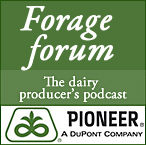 The National Cattlemen’s Beef Association announced that Forrest L. Roberts will be its next chief executive officer. Roberts, 42, will start Jan. 20.
The National Cattlemen’s Beef Association announced that Forrest L. Roberts will be its next chief executive officer. Roberts, 42, will start Jan. 20.
Roberts grew up on a family-owned, diversified livestock operation in Uvalde, Texas. He worked side-by-side with his family when the operation expanded to include a retail meat market for “locally grown, corn-fed” beef and pork. Forrest went on to earn a Bachelor of Science in animal science from Texas A&M University and a Master of Business Administration from the University of North Carolina.
Roberts has held several marketing and sales positions in two animal health companies. He started with Upjohn Animal Health in 1992, and he remained with the company through its two mergers to Pharmacia Animal Health and later Pfizer Animal Health. In 2004, he left Pfizer to join Elanco Animal Health where he most recently served as the marketing manager for Elanco’s Beef Business Unit.
“Forrest’s agriculture background, business experience and his passion for the industry clearly made him the candidate we wanted to lead our association into the future,” Groseta said. “Forrest is a goal-oriented and dynamic leader, who will take NCBA to the next level to better serve the cattlemen of this country. We fully expect him to meet the challenges of our industry head-on with innovative solutions that will help producers succeed in the global marketplace.”
In addition to his agriculture and beef business experience, Roberts has served in several volunteer positions in NCBA. He has been a member of NCBA’s Executive Committee, board of directors, Allied Industry Council, Long-Range Planning Committee and the National Cattlemen’s Foundation Board of Trustees.

 Registration is now open for
Registration is now open for  More than half of the digested fiber comes from the starch and sugar portion of the corn kernel. Therefore, it is vital for a producer to evaluate the availability of fiber in feed supplies this winter and look at factors such as kernel particles that can make a difference in the nutritional value of their silage. Energy from starch is available only if the material is digested. Smaller kernel particles are digested more easily by the intestines and rumen. Larger particles or whole kernels often are digested without breakdown, resulting in minimal nutritional value and, potentially, acidosis. Fredric Owens, Pioneer senior research scientist talks about starch digestibility and its importance.
More than half of the digested fiber comes from the starch and sugar portion of the corn kernel. Therefore, it is vital for a producer to evaluate the availability of fiber in feed supplies this winter and look at factors such as kernel particles that can make a difference in the nutritional value of their silage. Energy from starch is available only if the material is digested. Smaller kernel particles are digested more easily by the intestines and rumen. Larger particles or whole kernels often are digested without breakdown, resulting in minimal nutritional value and, potentially, acidosis. Fredric Owens, Pioneer senior research scientist talks about starch digestibility and its importance.
 It’s hard to believe that World Ag Expo in Tulare, Calif. is a little more than a month away. Held February 10-12, the is the world’s largest annual agricultural exposition, with 2.6 million square feet of exhibit space, over 1,600 exhibitors and an estimated 100,000 attendees.
It’s hard to believe that World Ag Expo in Tulare, Calif. is a little more than a month away. Held February 10-12, the is the world’s largest annual agricultural exposition, with 2.6 million square feet of exhibit space, over 1,600 exhibitors and an estimated 100,000 attendees. The
The  President-elect Barack Obama will have his hands full when he takes office in January, and some activists want to make sure his belly is full, too —
President-elect Barack Obama will have his hands full when he takes office in January, and some activists want to make sure his belly is full, too — 
